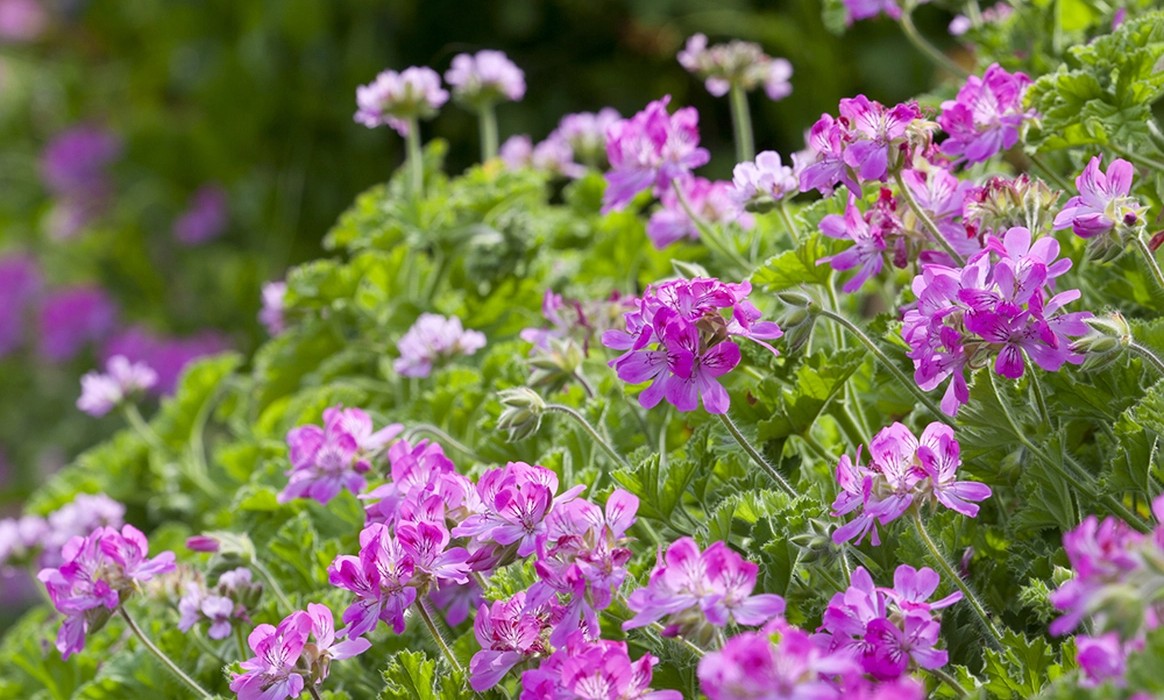choosing pelargoniums
Pelargoniums are perfectly behaved, low-maintenance, high-performing, good-looking indoor or outdoor pot plants.
I now want to get my pelargoniums out of pots and into the ground, mixing up a few carefully chosen groups in one of the beds in the greenhouse for the autumn and, outside, in a swathe of bedding next summer. Coming from South Africa, pelargoniums can't survive outside in winter, so they need to be lifted, but that shouldn't put you off.
I've just been to Fibrex, the great pelargonium nursery near Stratford upon Avon, to decide which to grow. To work out beautiful combinations Ursula Key Davis encouraged me to play around, picking a flower or sprig from each of the ones I liked from her recommendations. The rules of selection? I was looking for plants highly prized by the expert; long-flowering, easy to grow, with rich or punchy colour contrasts between them.
sultry six
My first group included that stalwart partnership of colours – deep crimson with acid-green, with the green coming from flowers as well as leaves. I can think of almost nothing nicer than a green-flowered pelargonium and P. gibbosum, a species from the western coast of South Africa, is just that. It's a lovely thing, with elegant silvery leaves, a delicious night scent and juicy, rather brittle stems with swollen joints. That's where it gets its nickname from – the gouty one.
As the bright background colour, throw in leaves of the Scented-Leaved pelargonium ' Attar of Roses', a proper euphorbia-green, then overlay with a series of four superb, long-flowering and reliable, Ivy-Leaved pelargoniums, such as the single-flowered, deep red 'April Hamilton' and matching colour, double-flowered 'Harvard' and the richer, darker equivalents, the single 'Choun Cho' and double 'Barbe Bleu'. Those six plants make a magnificent combination that I'm longing to get into the ground this year and next.
dark and mysterious
Equally dark and even more velvety is a group that includes the classic Regal pelargonium, ' Lord Bute', the delicate, deep-coloured species, P. sidoides, Ivy-Leaved, 'April Hamilton' and another less well-known Regal, 'Mystery'. I've grown individual pots of these at Perch Hill, but will also now get this group into the ground. They need the squeeze of lemon sharpness from 'Charity', but all together should then look good for a four or five-month stretch.
light relief
Zingier than these sultry, rich-coloured groups, it's also good to have a vibrant cheery combination, such as the deep pink, Ivy-Leaved, ' Surcouf' and matching Decorative, 'Ashby'. Instead of green for brightness, add the white of 'Australian Mystery' – a beautiful and unusual combination of purple-crimson and white – and 'Cottenham Wonder', a pretty and innocent-looking, Angel pelargonium in brilliant pink and crimson. These are all highly recommended by Ursula, with long flowering seasons and rapid growth.
foliage for cutting
While at Fibrex, I also collected together a group to grow next year for foliage for flower arranging. 'Charity' appears again. You can hardly have a selection without it. 'Grey Lady Plymouth' was there, too. 'Lady Plymouth' is rightly well known, with elegant, highly indented, hand-like leaves in grey-green and cream, but I like the grey version of this scented variety even more.
Add to that the classic P. quercifolium, with its crimson splotch at the centre of every leaf, and the even more dramatic, huge-leaved equivalent, 'Chocolate Peppermint', which looks as though it has come straight out of the jungle. Finally, no group for flower arranging would be complete without 'Attar of Roses', the classic, pretty-leaved, rose-scented variety, an excellent quick grower, making it almost cut-and-come-again.
All five of these have good upright stems that would create excellent bases for small flower arrangements and posies. Mix them with roses, sweet peas and some of the more delicate, wild-looking dahlias such as D. coccinea. They look good for five or six months of the year and whenever they're slightly crushed or bruised, they smell delicious.
For irresistible swagging of flowers or intensely fragrant foliage, any one of these pelargoniums is hard to beat.




